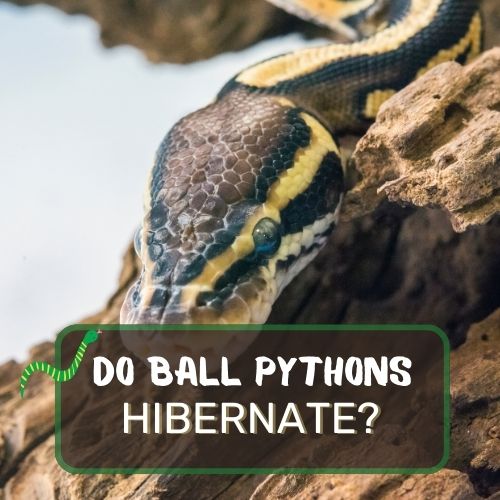
“Do ball pythons hibernate?” It’s a question that has piqued the curiosity of many reptile enthusiasts and ball python owners alike.
In this comprehensive article, we’ll unravel the mystery behind this intriguing behavior.
Diving deep into the world of ball pythons, we’ll explore their natural habits, differentiate between hibernation and brumation, and shed light on how seasonal changes impact these mesmerizing creatures.
By delving into the factors that influence their dormant periods and understanding signs of health versus illness, you’ll gain invaluable insights into their care.
So, whether you’re a seasoned herpetologist or a new snake parent, this article promises to equip you with knowledge that’ll enhance your bond with these fascinating reptiles.
Dive in and discover the world of ball pythons like never before!
Table of Contents
Do Ball Pythons Hibernate?
Ball pythons, known for their captivating patterns and gentle nature, do not hibernate in the traditional sense that many mammals do. Instead, they undergo a period called “brumation.” During brumation, these reptiles experience a significant decrease in their activity levels and metabolic rate. It’s akin to a dormancy phase, where they might become less active, stay in their hideouts more, and eat less frequently. However, it’s essential to note that not all ball pythons will exhibit this behavior.
The environment, genetics, and individual health can influence whether a ball python enters brumation. Always ensure they have the right care during these cooler months.

What is Hibernation/Brumation?
When the cold winds start to blow and the days get shorter, many animals prepare for a long winter nap. But what about our scaly friends, like the ball python? Do they snuggle up and sleep the winter away?
Let’s dive deep into the world of hibernation and its reptilian counterpart, brumation.
Definition and purpose of hibernation in animals.
Hibernation is a fascinating survival strategy adopted by many animals, especially mammals. Think of bears, for instance. They gorge on food, store fat, and then take a long, deep sleep during the winter months.
This isn’t just a regular sleep; it’s a state of inactivity where their metabolic rate drops, body temperature decreases, and energy consumption is minimal. The primary purpose? Conservation of energy when food is scarce.
Now, let’s imagine you’re out on a chilly winter day, and you spot a ball python. You might wonder, “Is this slithery creature hibernating like the bear?” The answer is a bit more complex.
Differences between hibernation, brumation, and estivation.
While mammals hibernate, many reptiles, including ball pythons, undergo what’s called “brumation.” It’s similar to hibernation but not quite the same. During brumation, ball pythons experience a decrease in activity and a metabolic slowdown.
They might stay in their hideouts more, become less active, and eat less. But unlike hibernation, they don’t enter a deep sleep. Instead, they remain somewhat alert, even if they’re less active.
Now, let’s throw another term into the mix: estivation. This is like the summer version of hibernation, where animals go into a state of dormancy due to high temperatures and dry conditions. Think of it as a summer siesta for some creatures to avoid the scorching heat.
So, to sum it up:
- Hibernation is a deep sleep during winter, mainly by mammals, to conserve energy.
- Brumation is a reptile’s way of dealing with cold temperatures, characterized by reduced activity but not a deep sleep.
- Estivation is a summer dormancy, a break from the heat.
In the case of our ball python friend, while they don’t hibernate, they might brumate during cooler months. But remember, not all ball pythons will exhibit this behavior. Factors like environment, genetics, and individual health can influence their winter habits.
So, the next time someone asks, “Do ball pythons hibernate?” You can confidently say, “No, but they might brumate!” And with that, you’ve just added a fun fact to your reptile knowledge bank!
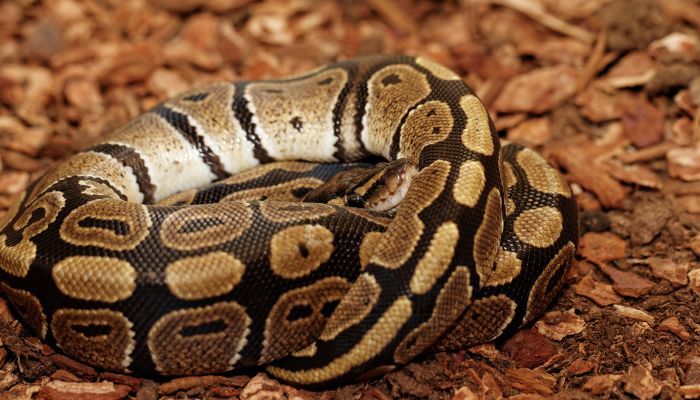
Do Ball Pythons Hibernate in the Wild?
Ah, the wild! A place where nature dictates the rules and animals adapt to survive. When it comes to ball pythons, their behavior in the wild is a testament to their resilience and adaptability.
But do they hibernate like some of their cold-blooded cousins? Let’s find out.
Introduction to brumation: a period of decreased activity and metabolic slowdown.
As we’ve touched upon earlier, ball pythons don’t hibernate; they brumate. Brumation is like nature’s way of giving reptiles a “power-saving mode.”
During this phase, ball pythons reduce their activity levels, their metabolism slows down, and they eat less. But unlike hibernation, where animals are in a deep sleep, during brumation, ball pythons remain somewhat alert.
Natural behaviors of ball pythons in their native habitat.
Ball pythons hail from the grasslands and forests of West and Central Africa. In these regions, while there are seasonal changes, the temperature doesn’t drop to freezing levels.
In their natural habitat, ball pythons are accustomed to hiding in burrows, which offer protection and a relatively stable environment. During cooler months, they might spend more time in these burrows, venturing out less frequently.
Seasonal changes and how ball pythons adapt.
With the onset of the cooler season in their native habitats, ball pythons naturally begin to exhibit signs of brumation. The days are shorter, and the nights are cooler. Food becomes scarcer.
In response, these snakes reduce their feeding frequency, conserve energy, and limit their movements. It’s all about survival and ensuring they’re ready to be active again when the warmer months roll around.
Comparison with other reptiles that hibernate.
While ball pythons brumate, other reptiles, especially those in colder climates, might hibernate. For instance, some species of turtles, tortoises, and even lizards in temperate regions will hibernate during winter.
They’ll burrow deep into the ground or find a cozy spot, slowing their metabolism to a crawl, and essentially “sleep” through the cold months.
In contrast, ball pythons, given their tropical origins, have a milder form of dormancy. Their brumation is less about escaping freezing temperatures and more about adapting to seasonal changes in their environment.
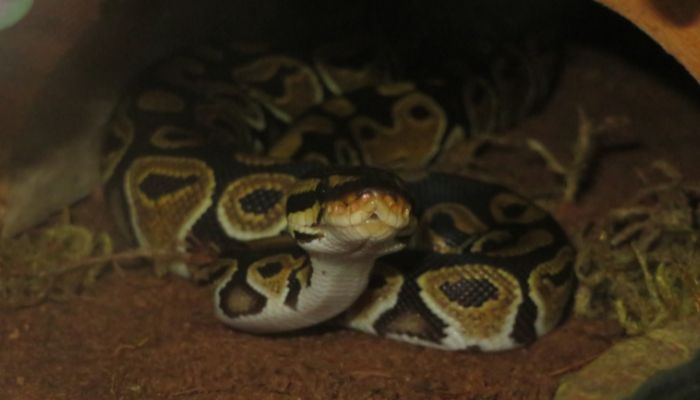
Signs of Hibernation vs. Illness
When your ball python starts acting differently, it’s natural to wonder: is it just brumating, or is something amiss?
Let’s delve into the signs that can help you differentiate between a python in its natural dormant state and one that might be under the weather.
How to differentiate between a hibernating python and a sick one.
First and foremost, remember that ball pythons don’t hibernate; they brumate. During brumation, these snakes will exhibit reduced activity, eat less, and spend more time in their hideouts.
Their eyes might appear slightly cloudy, and they might be less responsive to external stimuli. All these are natural behaviors during this period.
However, if your ball python shows signs like mucus around the mouth, labored breathing, unusual spots or blisters on the skin, or refuses food for an extended period even after the cooler months, it’s time to raise an eyebrow.
These aren’t signs of brumation; they could indicate an underlying health issue.
Common symptoms of illnesses in ball pythons.
Ball pythons, like all creatures, can fall ill. Some symptoms to watch out for include:
- Respiratory issues: Wheezing, open-mouth breathing, or excessive mucus.
- Skin problems: Unusual blisters, lesions, or prolonged shedding issues.
- Digestive troubles: Regurgitation or refusal to eat for extended periods outside of brumation.
- Behavioral changes: Sudden aggression, lethargy beyond the brumation period, or difficulty in moving.
When to consult a veterinarian.
If you notice any of the above symptoms or if your gut feeling says something’s off, it’s time to consult a professional. A reptile veterinarian will have the expertise to diagnose the issue and recommend appropriate treatment.
Remember, it’s always better to be safe than sorry. Early detection and intervention can make all the difference in ensuring your ball python’s health and longevity.
In the end, understanding your ball python’s natural behaviors and being vigilant about any deviations is the key. Brumation is a natural process, but any signs that veer off the expected path warrant attention.
After all, these fascinating creatures rely on us for their care, and it’s our responsibility to ensure they lead healthy, happy lives.
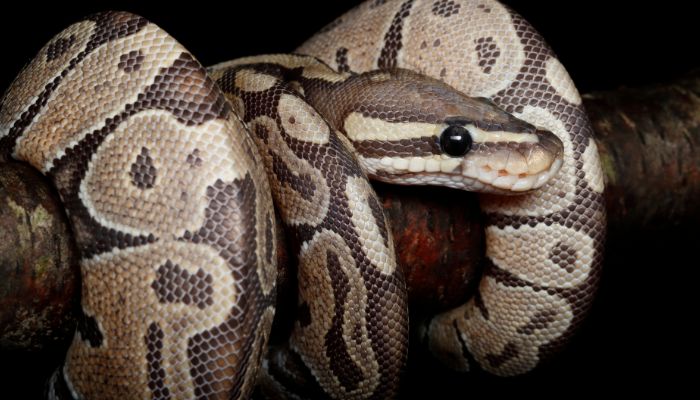
Caring for Ball Pythons During Brumation
Brumation can be a puzzling time for ball python owners, especially if you’re new to the world of reptile care. While your slithery friend is in this dormant state, it’s essential to provide them with the utmost care.
Let’s dive into the best practices to ensure your ball python remains healthy and content during this period.
The necessity of fresh water and regular cleaning.
Even though your ball python might be less active during brumation, hydration remains crucial. Always ensure they have access to fresh water. Regularly check the water dish, refill it as needed, and keep it clean.
Stagnant water can become a breeding ground for bacteria, which is the last thing you want.
Additionally, while your python might be less active, it doesn’t mean their enclosure should be neglected. Regular cleaning is essential. Remove any waste promptly and ensure the substrate is clean and dry. A clean environment is a healthy environment!
Monitoring weight to ensure the snake’s health.
Brumation is a time of reduced activity and, often, reduced food intake. It’s natural for your ball python to lose a bit of weight during this period. However, a significant weight loss can be a red flag.
Make it a habit to weigh your snake regularly. If you notice a drastic drop in weight or if the snake appears emaciated, it’s time to consult a veterinarian.
The importance of avoiding handling and not offering food during brumation.
Your ball python is in energy-saving mode during brumation. Handling them during this time can cause unnecessary stress. It’s best to let them be, observe from a distance, and minimize disturbances.
Similarly, offering food might not be the best idea. Their metabolism is slowed, and they might not digest food properly, leading to regurgitation or other digestive issues.
Wait until the brumation period is over and their activity levels return to normal before reintroducing food.
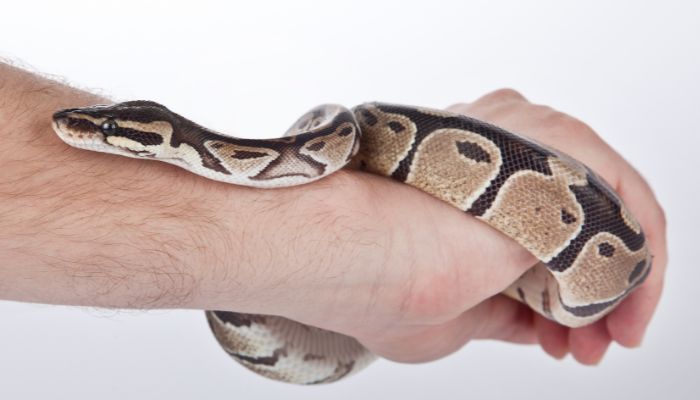
Tips to simulate natural winter conditions: decreasing photoperiod, insulating the enclosure, and more.
To make brumation as natural as possible for your ball python:
- Decrease the photoperiod: Gradually reduce the amount of light your python receives daily. This simulates the shorter days of winter and can encourage brumation.
- Insulate the enclosure: Ensure the enclosure remains at a consistent temperature, free from drafts. You can add extra insulation or use heat mats to maintain the desired temperature range.
- Provide multiple hiding spots: Ball pythons love to hide, especially during brumation. Offering multiple hide spots can make them feel secure and comfortable.
Bbrumation is a unique period in a ball python’s life. With the right care, understanding, and a dash of patience, you can ensure your scaly companion sails through this phase with ease.
Remember, every snake is different, so always be observant and cater to their individual needs.
The Impact of Brumation on Breeding
Breeding ball pythons can be an exciting venture, but it’s intertwined with the natural rhythms and cycles of these fascinating creatures. One of the key periods that can influence breeding is brumation.
But how exactly does this dormant phase impact the reproductive cycle of ball pythons? Let’s delve into it.
Does brumation affect the breeding cycle of ball pythons?
Absolutely! Brumation can play a pivotal role in the breeding cycle of ball pythons. In the wild, brumation acts as a precursor to the breeding season.
This period of reduced activity and metabolic slowdown can help synchronize the reproductive cycles of males and females. When the warmer months roll around, and brumation ends, ball pythons are often more receptive to breeding.
The cooling period during brumation can stimulate the production of sperm in males and make females more receptive to mating once they emerge from this dormant state.
Preparing a ball python for breeding post-brumation.
Once brumation is over, and you’re looking to breed your ball pythons, there are a few steps to ensure success:
- Gradual Warm-Up: Slowly increase the temperature in the enclosure to bring your python out of its dormant state and back to its active self.
- Diet: After brumation, it’s essential to reintroduce food gradually. A well-fed snake is more likely to be a successful breeder.
- Introduce Mates: Once both the male and female are active and feeding regularly, you can introduce them for mating. Monitor their interactions to ensure everything goes smoothly.
In essence, brumation can be a natural trigger for the breeding season in ball pythons. By understanding this cycle and preparing accordingly, breeders can increase their chances of successful mating and healthy offspring.
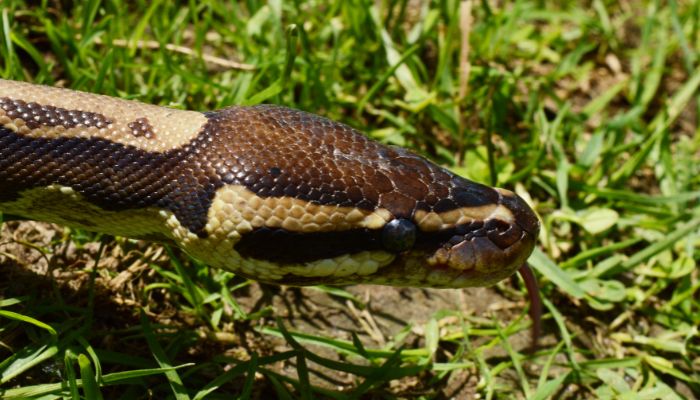
Conclusion
You’ve journeyed through the captivating world of ball pythons, unraveling the enigma of their dormant behaviors.
By now, you understand that these creatures don’t truly hibernate but rather undergo a period called brumation.
This natural cycle, influenced by seasonal changes, is a testament to their adaptability and resilience.
You’ve also learned to differentiate between a brumating python and one that might be unwell, a crucial skill for any responsible reptile owner.
As you move forward, remember that understanding and respecting their natural rhythms is key to ensuring their well-being.
Every time you observe your ball python or engage in its care, you’re not just looking after a pet; you’re preserving a piece of nature’s wonder. So, keep learning, stay curious, and continue to be the best caretaker you can be.
Your ball python’s health and happiness are a reflection of your dedication. Here’s to many more moments of wonder and discovery with your scaly companion!
FAQ
Ah, the world of ball pythons! It’s filled with intrigue, beauty, and, of course, a few questions. Let’s tackle some of the most frequently asked questions about these mesmerizing creatures.
Why is my ball python not moving?
Your ball python might be exhibiting reduced activity due to several reasons. It could be brumating, especially if it’s during the cooler months. However, if you’re concerned about its inactivity, ensure its environment is optimal—check the temperature, humidity, and overall health. If everything seems fine and it’s just a seasonal slowdown, there’s no need to worry!
How long can a ball python go without eating?
Ball pythons can go a surprisingly long time without food. During brumation, they might not eat for weeks or even months. Outside of this period, a healthy adult ball python can go for several weeks without a meal, but it’s always good to monitor their weight and overall health.
How do you know when a ball python is dying?
Signs of severe distress in a ball python include significant weight loss, labored breathing, lethargy, refusal to eat for extended periods (outside of brumation), and visible injuries or infections. If you notice any of these signs, consult a veterinarian immediately.
How do I make my ball python more active?
Ensure its environment is optimal with the right temperature and humidity levels. Engage with it through regular, gentle handling (outside of brumation) and provide it with an enriched environment, including hides and climbing structures.
How long do ball pythons hibernate?
Trick question! Ball pythons don’t hibernate; they brumate. This period of reduced activity can last anywhere from a few weeks to several months, depending on the individual snake and its environment.

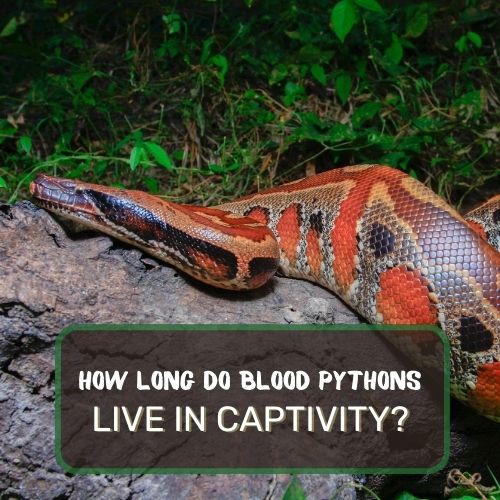
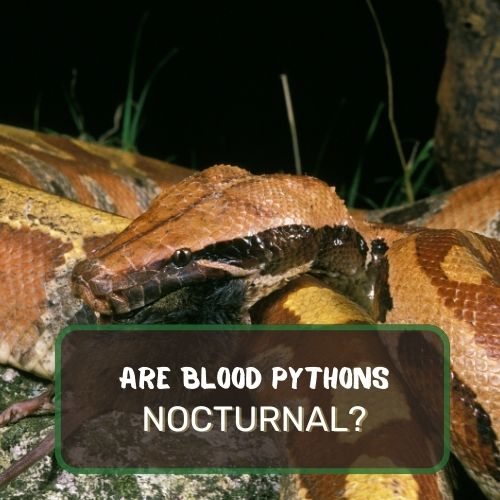

0 Comments